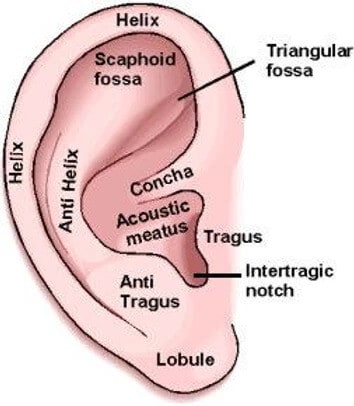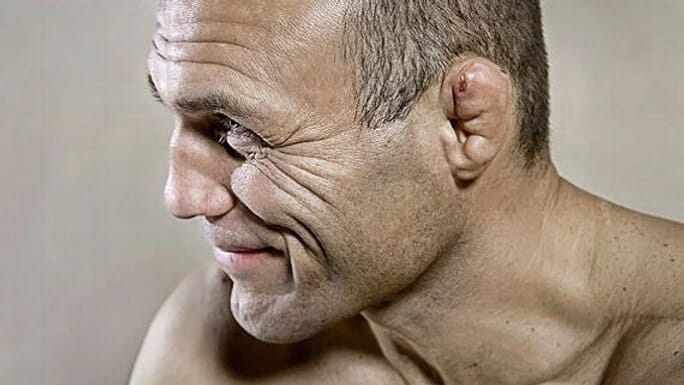The professionals at The Hearing Health Center of Houston want to wish everyone a Happy Halloween!
Let’s take a look at the “spookiest” part of Audiology when it comes to how the public sees ears.

Made of soft tissue called cartilage, the ear is a part of our body that not only serves the purpose of fashion, but also sound collection. Our outer ear, known as the pinna or auricle – has specific nooks and crannies to gather and shape sound. Without the outer ear, sound would have a much more difficult time making it to our ear drum.
This helps with locating the source of sound.

So all those nooks and crannies – they actually have names? Yes, they do!
While some may know these names for specific ear piercings, Audiologists, Ear Nose & Throat physicians and nurse practitioners view these landmarks as part of a routine examination. Genetics can also determine the shape of these features (e.g. attached or non-attached ear lobule).
“Cauliflower Ear”

In sports, boxers and wrestlers may display a specific type of outer ear, called a Cauliflower Ear. This is when repeated irritation causes the blood to clot and tissue to become damaged leading to deformity. Studies show that persons with cauliflower ear are more likely to have hearing loss and risk of ear infection. This can be prevented by wearing protective equipment.
What about piercings?
Many cultures around the world use ear piercings. Traditionally, the lobule is pierced; however, it is becoming more mainstream to have piercings on the helix, tragus and concha. Some even partake in the use of gauges, which expand the size of the lobule (see picture). When looking to pierce your ears, we always want to make sure that good sanitary practices are used to prevent infection. Gauges

Whether you’re using your outer ear to collect sound or to display your personal style, we hope you have a wonderful Halloween and are enjoying the screams from all of the trick-or-treaters!
Eerily yours,
The Team at The Hearing Health Center of Houston
References:
https://www.ncbi.nlm.nih.gov/pmc/articles/PMC4592768/
http://www.webmd.com/skin-problems-and-treatments/cauliflower-ear-symptoms-causes-treatments#1
www.asha.org
www.audiology.org


